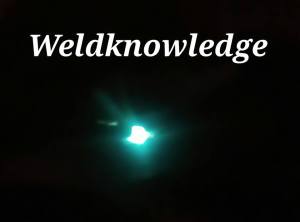A lot more depends on selection of the electrode type for successfully carrying out weld with SMAW process. Wrong selection of electrode type may lead to more defects, more repairs. The selection of correct type of electrode coating results in weld metal with desired quality characteristics at low cost. In general, welding electrode is selected in such a way that characteristics of weld metal are similar to or better than the base material while keeping in mind the welding position and weld joints design as they significantly affect the properties of the weld.
The covering of the stick electrode consists of a multitude of components which are mainly mineral, below figure shows coating raw material and its effect on the welding characteristics.

Stick electrodes are, according to their covering compositions, categorized into four different types:
Cellulosic electrodes (Symbol C)
These electrodes are composed of large amount of hydrocarbon compounds and calcium carbonates besides other constituents and are found suitable for
- All welding positions especially for vertical and overhead welding position and
- Realizing high mechanical properties in a weld metal of radiographic quality.
These are preferred for vertical downward welding. However, these produce high hydrogen content in weld metal besides deep penetration.
Rutile electrode (Symbol R)
These electrodes predominantly contain rutile (TiO2) besides other constituents and are known to offer almost 100% weld metal recovery, easy arc striking and restriking. These are found suitable for
- Fillet welds,
- Welding of sheet metal,
- Good gap bridging capability,
- Free from spatter losses and
- All position welding.
These are recommended for welding low strength steel (<440 MPa). For welding of high strength steel (>440 MPa) generally weld metal should have low hydrogen level and therefore weld joints is developed using basic, rutile, basic-rutile and Zircon based electrode.
Basic electrode (Symbol B)
These electrodes have basic (alkali) coatings containing calcium carbonate / calcium fluoride. The basic electrodes are preferred over other electrode for developing weld joints of high strength steel (480-550 MPa) with weld metal having
- Low hydrogen,
- Good low temperature toughness,
- Resistance to hot and cold cracking.
However, these electrodes suffer from comparatively poor slag detachability. The welding speed and deposition rate offered by the basic electrodes especially in vertical welding position is much higher than the rutile and acidic electrode. Basic electrodes can sustain higher welding current even in vertical welding position.
Acidic electrode (Symbol A)
Coating
- Easier arc striking than basic electrodes but poorer arc striking than rutile electrodes,
- Moderate welding speed,
- Smooth weld bead
- Good slag detachability.
However, acidic electrode has been replaced by rutile electrode and basic electrode for flat and positional welding respectively. The ductility and toughness weld metal developed by acidic electrode are better than those developed from rutile electrodes however yield and ultimate tensile strength are found inferior. This type of electrode results in minimal penetration which is good for very thin sheet but these are sensitive to moisture pick up.
Below figure compares the characteristics of the four different types

Apart from these categories other type of coatings such as Iron powder coating electrode, basic-rutile electrode, etc. are also available, which are basically general modifications of the four above mentioned categories to fetch more advantages by combining the positives of the each type.
Reference: Technical document, MMAW, Aachen, ISF & Technical document, Nptel
Keep reading, Happy welding,
Thank you
KP Bhatt

